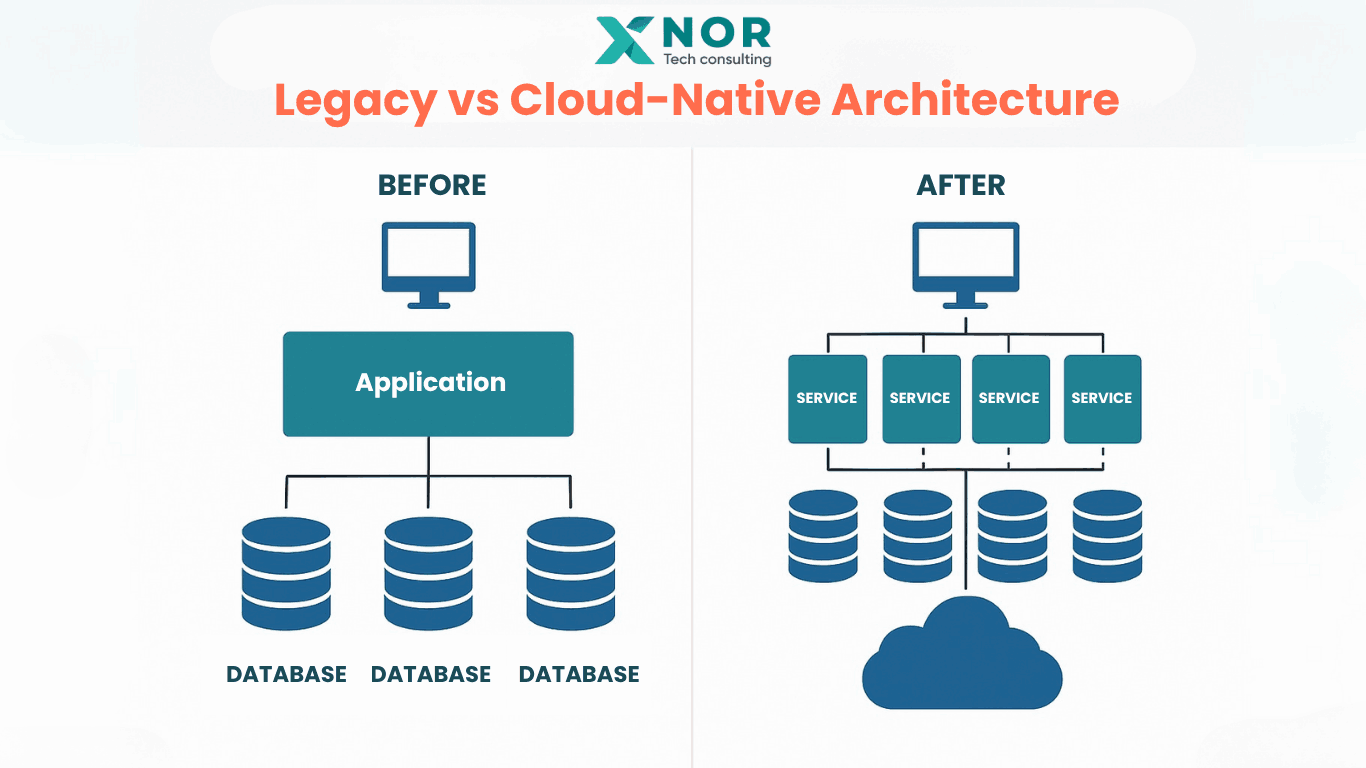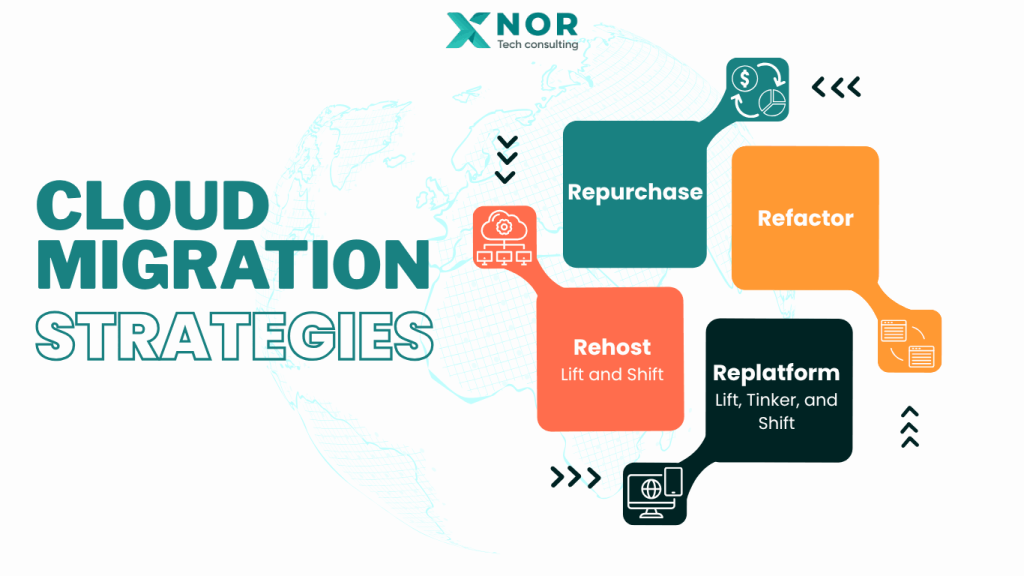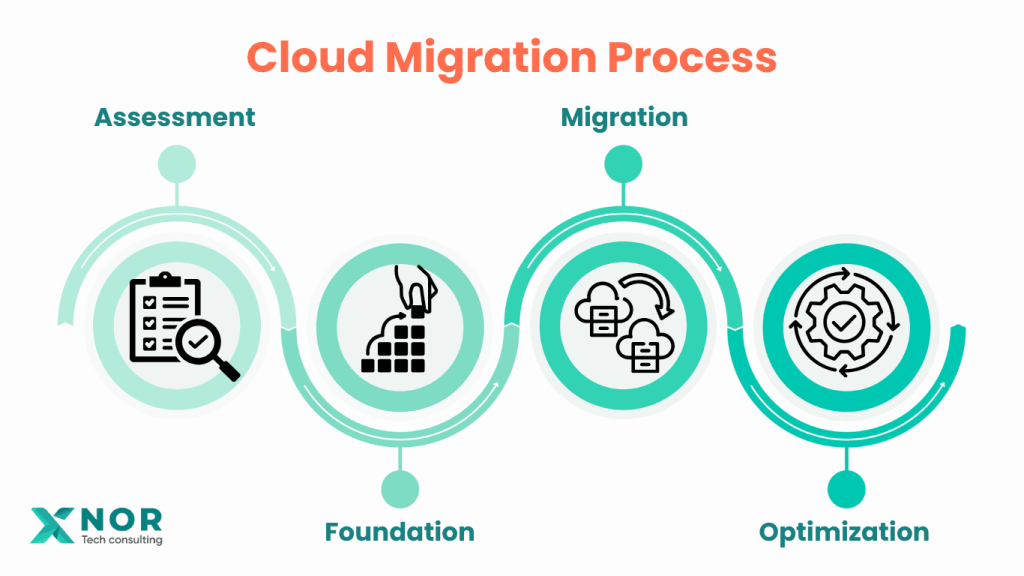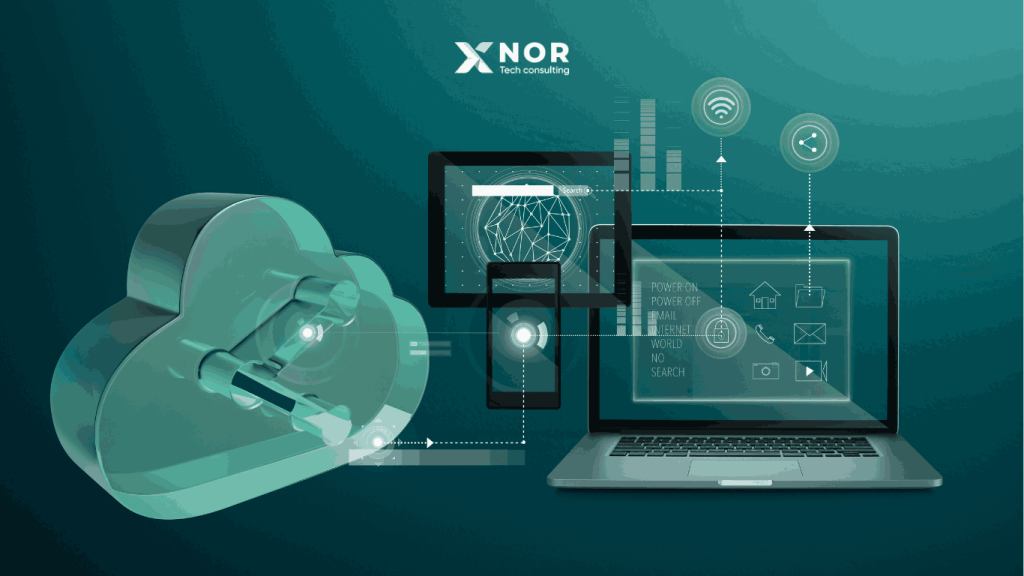Looking to migrate your system to the cloud? Discover a comprehensive guide to cloud migration, from strategy to execution. Learn about cloud migration solutions, on-prem to cloud migration tips, and how cloud migration companies can help you make the move efficiently and securely.
Introduction: Why Cloud Migration Is a Strategic Imperative
In the past decade, cloud migration has evolved from a tech buzzword into a strategic necessity for businesses of all sizes. From startups seeking scalability to enterprises prioritizing digital transformation, migrating to the cloud offers cost efficiency, improved performance, and future-readiness.
According to Gartner, global end-user spending on public cloud services is expected to reach $678.8 billion in 2024, up from $563.6 billion in 2023. This shift highlights how businesses are prioritizing cloud adoption to enhance agility and resilience.
But why exactly are organizations racing to the cloud? And more importantly, how can your business ensure a successful migration without falling victim to common pitfalls that derail 70% of cloud initiatives?
For comprehensive cloud migration solutions, it’s essential to understand both the opportunities and challenges ahead.

What Is Cloud Migration?
Cloud migration refers to the process of moving digital workloads – applications, data, infrastructure – from on-premises systems to cloud environments. It also includes cloud to cloud migration, such as moving from AWS to Azure or vice versa.
This isn’t just a tech upgrade. It’s a strategic transformation that, when done right, impacts cost, performance, and innovation velocity.
The Four Cloud Migration Approaches: Which One Is Right for You?

Before diving into cloud migration, you must understand the different approaches available to choose the right fit for your specific business needs:
Rehosting (“Lift and Shift”)
This approach involves moving applications to the cloud with minimal modifications—essentially replicating your current environment in the cloud.
Best for: Organizations seeking quick cloud migration with minimal disruption, often as a first step in a phased approach.
Key insight: While rehosting offers the fastest path to cloud migration, it limits your ability to leverage cloud-native capabilities that could deliver substantial long-term value.
Replatforming (“Lift, Tinker, and Shift”)
With replatforming, you make moderate optimizations to applications during migration without completely redesigning them.
Best for: Applications that would benefit from some cloud optimization without requiring a complete rebuild.
Key insight: This balanced approach can deliver better ROI than simple rehosting while requiring significantly less time and risk than full refactoring.
Refactoring/Rearchitecting
This comprehensive approach involves redesigning applications to fully exploit cloud-native capabilities.
Best for: Mission-critical applications where cloud-native features would provide substantial competitive advantages.
Key insight: While requiring the most significant investment, refactoring typically delivers the highest long-term ROI for core business applications.
Repurchasing (“Drop and Shop”)
This approach replaces existing applications with SaaS alternatives that provide similar functionality.
Best for: Non-core applications where standard commercial solutions can effectively meet business requirements.
Key insight: Repurchasing eliminates migration complexity but may require business process changes to accommodate differences in functionality.
The Triple Crown Benefits of Cloud Adoption
Despite its benefits, cloud migration presents significant challenges that must be navigated carefully:
Technical Roadblocks
Entangled Dependencies: Legacy applications often have complex, poorly documented dependencies
- Data Migration Complexity: Moving large datasets requires careful planning to avoid disruption
- Integration Obstacles: Ensuring cloud systems work seamlessly with remaining on-premises applications
- Security Transformation: Adapting security practices for distributed cloud environments
Expert tip: Conduct comprehensive dependency mapping before migration to identify potential complications and plan accordingly
Organizational Hurdles
Skill Deficits: Internal teams frequently lack experience with cloud technologies
- Resistance to Change: Staff may resist new workflows and technologies
- Governance Gaps: Establishing appropriate oversight for cloud resource usage and costs
- Continuity Concerns: Maintaining operations during transition periods
Expert tip: Invest in training programs before migration begins to build internal expertise and reduce resistance to change.
Your 4-Phase Action Plan for Seamless Cloud Migration

Follow this proven framework to ensure your cloud migration delivers maximum value with minimal disruption:
Phase 1: Strategic Assessment
- Document your current environment, including all applications, data assets, and dependencies
- Define clear business objectives and measurable success metrics
- Develop a prioritized migration roadmap, identifying which applications to migrate first
Critical action: Map all application dependencies using automated discovery tools to avoid surprises during migration.
Phase 2: Cloud Foundation Preparation
- Select the right cloud provider(s) based on your specific requirements
- Design your cloud architecture with security and compliance as foundational elements
- Establish governance frameworks for resource management and cost control
Critical action: Develop clear security and compliance standards before beginning any migration activities.
Phase 3: Methodical Migration
- Prepare applications and data based on your chosen migration approach
- Implement comprehensive security measures for data in transit and at rest
- Execute migration in carefully planned phases, starting with non-critical applications
Critical action: Create detailed rollback plans for each migration activity to minimize business disruption if issues arise.
Phase 4: Post-Migration Cloud Optimization
- Monitor application performance against pre-migration baselines
- Optimize resource allocation and implement auto-scaling where appropriate
- Continuously enhance security posture through regular assessments
Critical action: Implement cloud cost management tools from day one to prevent unexpected budget overruns.
7 Deadly Cloud Migration Mistakes to Avoid
Avoid these common pitfalls that frequently undermine cloud migration efforts:
1. Inadequate Discovery
Problem: Missing critical dependencies during planning leads to broken applications after migration.
Solution: Use automated discovery tools to comprehensively map all application relationships.
2. Neglecting Compliance Requirements
Problem: Overlooking industry-specific regulations results in costly non-compliance issues.
Solution: Involve compliance teams early and select cloud regions that satisfy regulatory requirements.
3. Poor Cost Management
Problem: Unexpected cloud costs emerge due to improper sizing and overlooked charges.
Solution: Implement cloud cost management tools and establish regular optimization reviews.
4. Insufficient Testing
Problem: Application issues discovered only after production cloud migration causes business disruption.
Solution: Develop comprehensive testing protocols that accurately simulate production workloads.
5. Overlooking Network Performance
Problem: Latency issues degrade application performance after cloud migration.
Solution: Conduct thorough network assessments and leverage content delivery networks where appropriate.
6. Neglecting Training and Change Management
Problem: Staff resistance and skill gaps impede effective cloud utilization.
Solution: Invest in comprehensive training programs and clear communication strategies.
7. Big Bang Migration Approach
Problem: Attempting too much migration at once increases risk of catastrophic failure.
Solution: Adopt a phased migration approach with clear success criteria for each stage.
What’s Next in Cloud Migration?
Upcoming Trends:
- AI-driven automation for migration planning
- Multi-cloud and hybrid strategies
- Edge computing integration
- Greener, sustainable cloud operations
According to a Flexera report, 90% of enterprises will adopt multi-cloud architectures to avoid vendor lock-in and enhance resilience.
Final Thoughts: Is Now the Right Time for Your Cloud Migration?
It’s a business transformation lever.
The cloud isn’t just for storing files—it’s the foundation of modern innovation. Whether you’re a startup or an enterprise, smart migration is your fastest path to agility, resilience, and growth.



